One of the unique aspects of Japanese culture is some of the rather unique foods that you are sure to encounter during a stay in Japan. One of these uniquely Japanese kinds of food is the basis for many delicacies in Japan, even though it is essentially only made from simple rice.
It is a food known for its delicately chewy texture and its name is “Mochi” (pronounced “Moh-chee”).
How Is Mochi Made?

Mochi is made from polished glutinous rice which has been soaked overnight and cooked. If prepared traditionally, the rice is pounded with wooden mallets in a wooden container or a stone mortar.
More than one person is involved in the process as one of the people pounds the mass of rice with a wooden mallet and the other person wets and folds the mass of rice after it is flattened by the mallet. In this way, the rice is essentially kneaded into a kind of firm rice dough. The resulting mass is then sculpted into various shapes, such as orbs or blocks
The Ritual Of Making Mochi
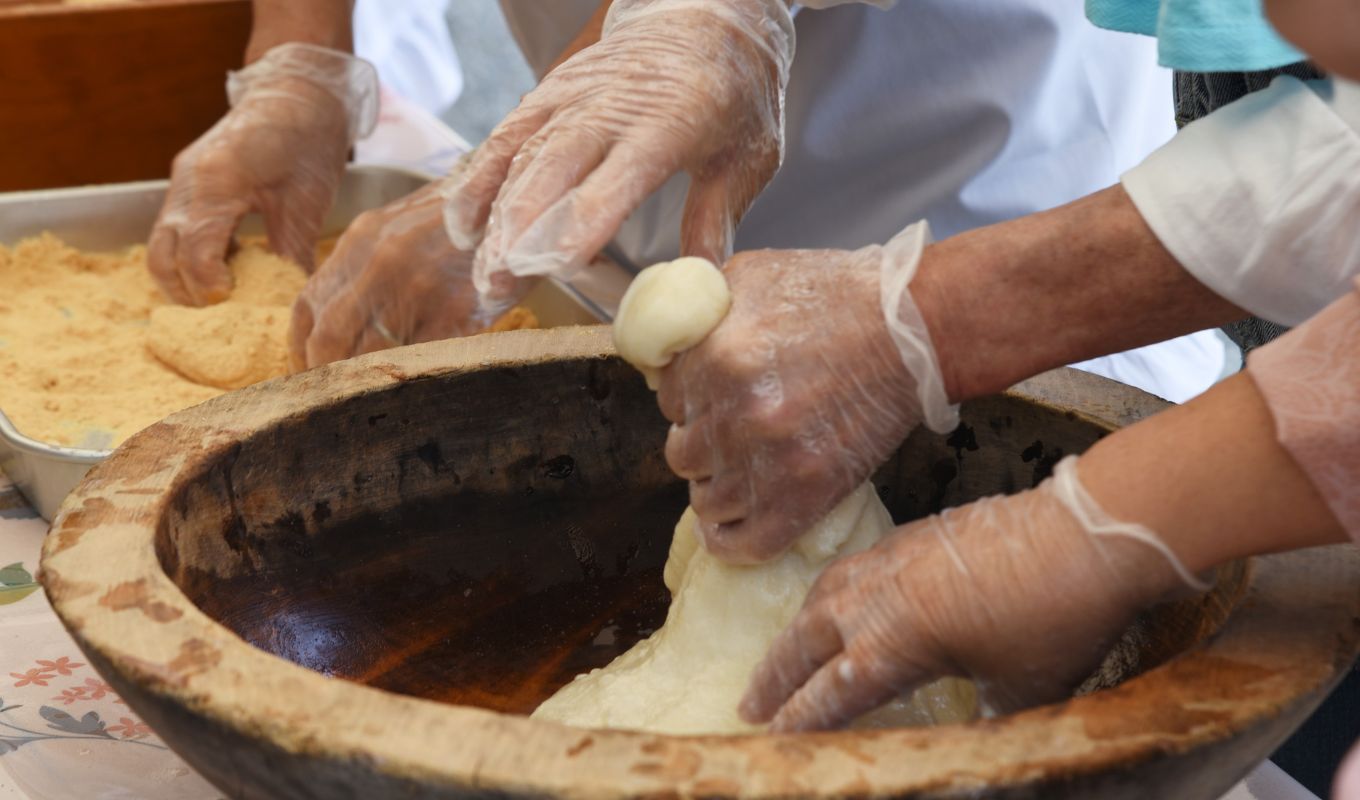
This activity is a common ritual performed by families, friends, and organizations around Japan for the New Year’s celebration. One of the primary decorations for the New Year actually features two relatively large orbs of mochi stacked upon each other and topped with an orange and a small bit of evergreen. It is almost as ubiquitous as the Christmas tree is in America.
Dango
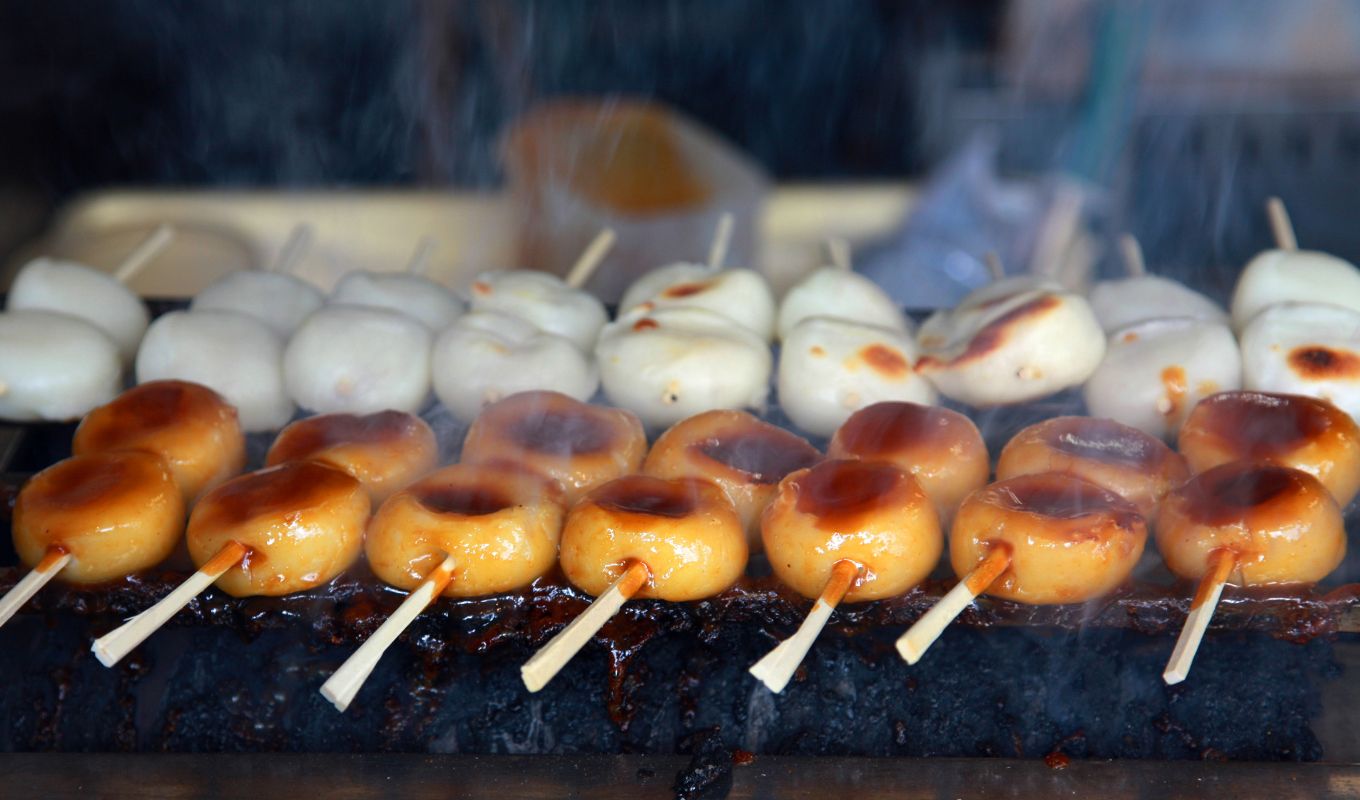
One really popular kind of more edible mochi that you will see throughout Japan is called “Dango”. This is pronounced “Dahnn-go”, although native Japanese speakers may still appear to have no idea what you are talking about unless you hold the center “ahn” just long enough.
Regardless of it being a potentially challenging word for native Japanese speakers to understand, it is a wonderful round dumpling made of either mochi or mochiko (rice flour). The chewy rice dumplings are available at just about any grocery or convenience store in Japan.
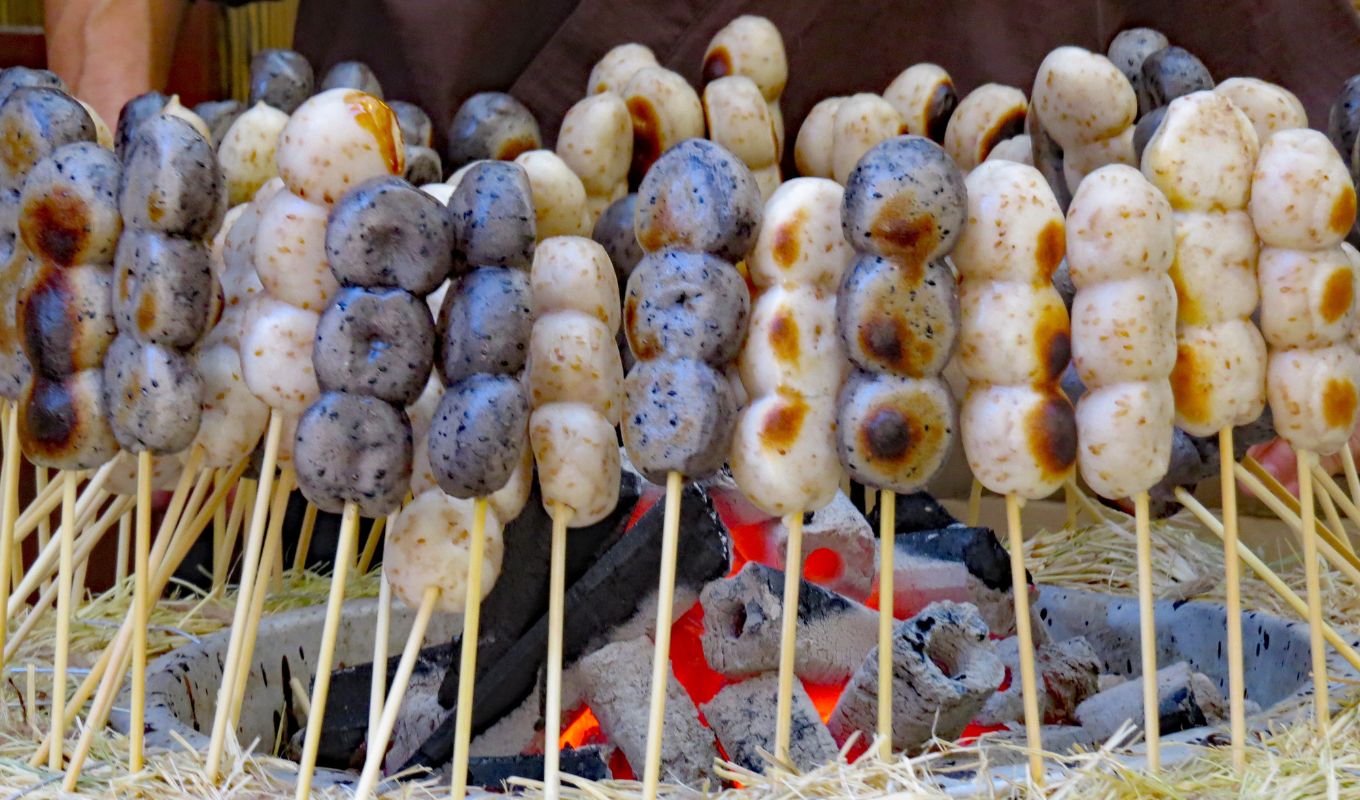
They are available in many formats but are most popularly available to be eaten on a small wooden skewer.
You may happily find a traditional style dango shop open to the street in such classical districts as Kyoto, Asakusa, and Kamakura, where you can watch the dango as it is being prepared over a small stone furnace.
Various flavors of dango are available; some are flavored with Japanese green tea, some with sesame, some with soy sauce, and some topped with a mildly sweetened paste of Japanese red beans called “Anko”. The red bean edition is reportedly the most popular in Japan.
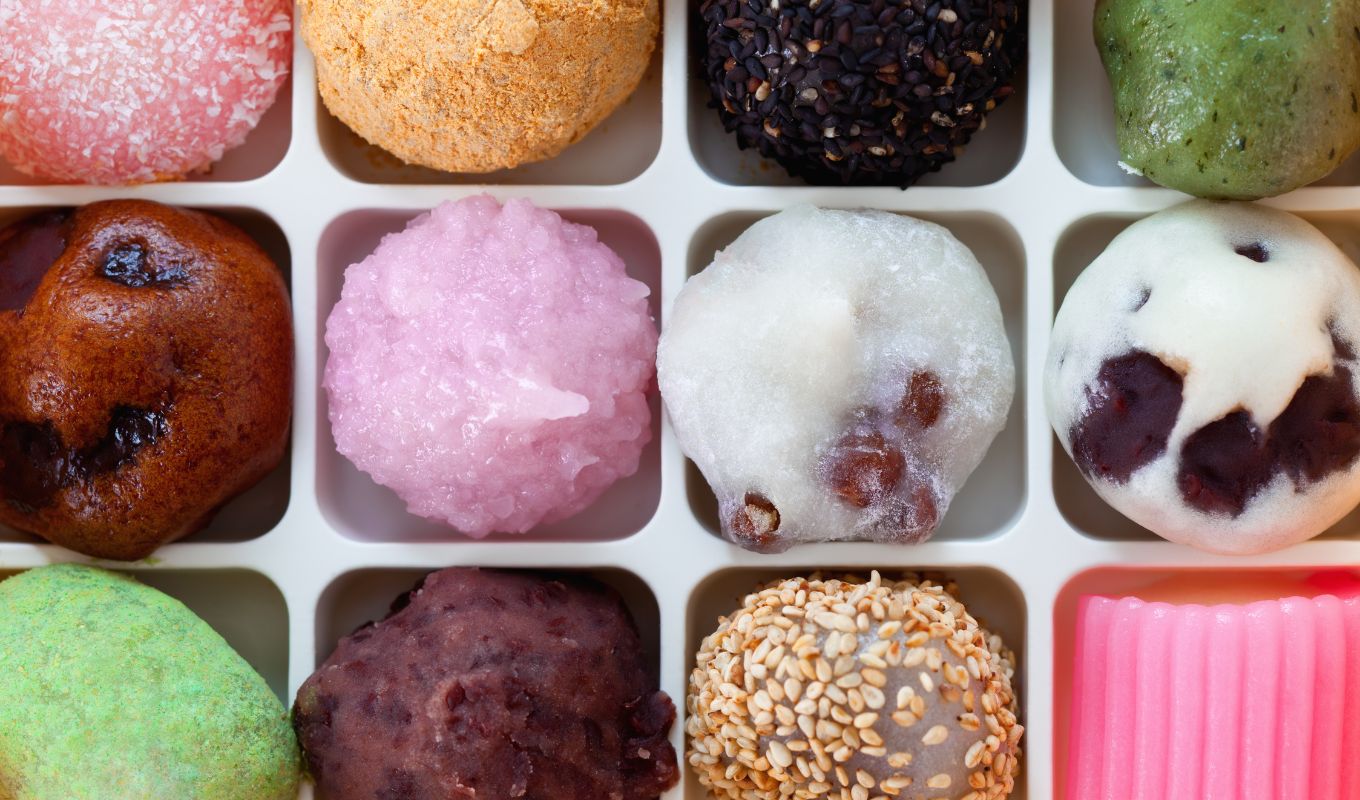
Dango are also featured in gourmet forms of dessert and will be mixed in a bowl with various other traditional Japanese treats and presented in a beautiful way. This is common in many smaller antique restaurants which specialize in Japanese green tea (known as matcha) and also classical Japanese desserts.
Try to resist eating excessive quantities of dango, as it is rather filling. It may be difficult to resist considering how wonderfully tasty it is.
Daifuku: Mochi Ice Cream
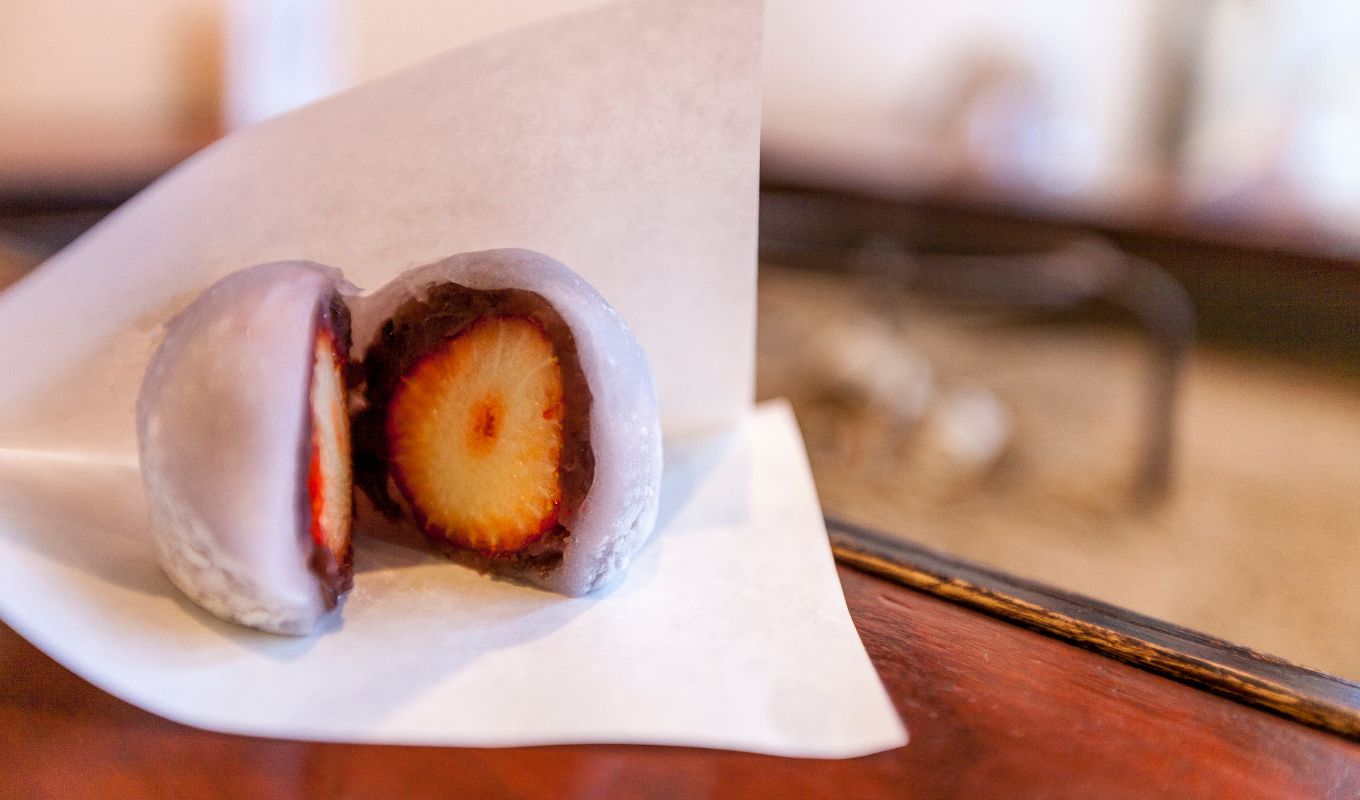
Another popular Japanese traditional food featuring mochi is called “Daifuku” (pronounced “Die-foo-koo”). It is usually a roundish disc of mochi which is sometimes flavored with various tastes such as green tea and contains a filling of some kind. The types of stuffing include red bean paste, white bean paste, or even a whole strawberry inside. This is a wonderful snack as it is easy to eat, quite filling, and really tasty too.
Yet another form of mochi which is popular is a rather new addition to the mochi family. Mochi ice cream is a delicious treat, which is similar to daifuku as it has a mochi outside, but is instead served cold and contains an ice cream core. Popular US stores such as Mollie Stone’s and Trader Joe’s carry mochi ice cream in various flavors, including green tea, chocolate, strawberry, vanilla, and more.
That is a lot of amazing food from such a simple ingredient. Mochi is truly marvelous.